NTSB Investigation into AW139 Bahamas Night Take Off Accident (Chris Cline’s Challenger Management AW139 N32CC near Big Grand Cay)
On 4 July 2019 at about 0153 Local Time, Leonardo Helicopters AW139 N32CC of Challenger Management LLC, was destroyed when it impacted the Atlantic Ocean, shortly after take off on a Part 91 ‘personal flight’, near Big Grand Cay, Abaco, Bahamas. The 7 persons on board, including US coal billionaire Chris Cline, were killed. Cline took coal mining firm Foresight Energy public in 2014, and sold a controlling stake in 2015 for $1.4 billion.
Safety Investigation
The investigation was initially under the jurisdiction of the Air Accident Investigation Department (AAID) of the Bahamas. AAID requested delegation of the accident investigation to the US National Transportation Safety Board (NTSB), which the NTSB accepted on 9 July 2019.
The US NTSB has to date only issued a preliminary report but on 19 August 2020 opened their online public docket. This contains 571 pages of factual evidence (a mix of raw data and working group factual reports), with official no analysis. The NTSB’s so called ‘Probable Cause’ is yet to be determined.
We have reviewed and summarised the key public docket documents below.
History of the Flight
The NTSB explain that:
Dark night visual meteorological conditions prevailed at the time and an instrument flight rules (IFR) flight plan was filed for a flight from Walker’s Cay Airport (MYAW), Walker’s Cay, Bahamas, to Fort Lauderdale/Hollywood International Airport (FLL), Fort Lauderdale, Florida.
The flight however departed from a private, unapproved helipad on Big Grand Clay in ‘black-hole‘ conditions. These conditions “typically occur over water or over dark, featureless terrain where the only visual stimuli are lights located on and/or near the airport or landing zone”.
The island had been owned by Cline since mid-2015 and currently valued at US$29 million. The Island Manager stated to NTSB that Cline had intended to develop the site into a resort “to target big Fortune 500 companies to bring their Board of Directors or employees” and had initiated a construction programme. Cline regularly visited via the AW139, his C208 floatplane or by vessel (the oddly named ‘Dirty Mines‘).
Cline, with family and friend had been on the island for a break to celebrate the US public holiday, his daughter and her friend’s college graduation and Cline’s 61st birthday (on 5 July).
Sometime very late on 3 July Cline’s daughter and a friend had fallen ill. When asked about their illness the manager replied “he was not sure of the reason, but they were groggy and unresponsive, but their heart was still beating [sic].” The NTSB’s line of questioning indicate they suspect the cause of their illness but it is not otherwise discussed.
Cline requested that the helicopter fly in from Fort Lauderdale to convey them to hospital. There appears to have been no liaison with Bahamas ATC for the flight and no liaison with any medical professional is recorded in the public docket before the flight was arranged, although a doctor is mentioned in the cockpit voice recording of the rotors running turnaround. The need for an ambulance to meet the aircraft triggered a crew discussion too about needing to arrange for customs clearance, which appears not to have been considered previously. The NTSB analysis will no doubt examine the flight in relation to local regulations too.
The aircraft arrived and was loaded rotors running c 0130-0145. After the flight departed the Island Manger went to bed but had called the US Coast Guard to request an ambulance meet the flight.
Another witnesses reported seeing and hearing an accident. One took his boat and made an unsuccessful search. It was only after 0600 when the Island Manager awoke that he realised the aircraft had not arrived. A further search was organised and the wreckage was located offshore that afternoon in about 16 ft of water about 1.2 nm NNE of the departure point.
There is no mention of any flight following or emergency response procedures in place.
Airworthiness Safety Investigation
The NTSB Airworthiness Factual Report explains that the helicopter was salvaged on 6 July 2019, transported to Jacksonville, Florida and examined from 8-12 July 2019. Subsequently the PT6 engines were examined in Canada at a PWC facility in August 2019 and the Airworthiness Group convened at Honeywell in Phoenix, Arizona immediately after to examine components from the automatic flight controls system (AFCS).
While the cockpit remained attached there was significant damage, especially to the left-hand side.
The investigators note that:
The fuselage belly skin panels generally did not exhibit deformation. Antennae remained attached to the belly of the main fuselage.
The [nose landing] gear was in the down and locked position.
Both sponsons had either broken off or been removed prior to shipment to the US.
The aft fuselage remained attached to the main fuselage but the tail boom was separated. The aft fuselage’s aft section exhibited deformation to the right on the upper deck and left upper longeron, but the floor structure appeared to be relatively straight.
All five main rotor blades remained attached to their respective pitch control levers, but all five were separated from the main rotor hub. For all five blades, the outboard ends of the upper and lower tension links remained attached to the pitch control lever and the inboard end of the main rotor blades. All five tension links were fractured inboard of the droop stop attachment bolts.
The swashplate assembly remained installed on the main rotor shaft centering plate.
All observed [pitch link] fractures exhibited signatures consistent with overload.
All four composite tail rotor blades had fractured at 9-13 inches from the root.
Three of the severed blades were recovered. Photographs are consistent with blade failure on impact with the water. This counters speculation from a single witness statement in the preliminary report that suggested the aircraft was ‘spinning’ before impact.
No pre-impact aircraft defects are been identified in the Airworthiness Factaul Report.
Pre-accident photographs suggest the aircraft was not fitted with external liferafts. An emergency flotation system appears to have been fitted. It is unlikely to have functioned in the high speed (141 knot) impact that occurred (see below).
Flight Crew / Human Performance Investigation
The NTSB Human Performance Factual Report explains that Challenger Management at that time operated this AW139 and four fixed wing aircraft (an ERJ 190, EMB 550, EMB 505 and a Cessna 208), seemingly all for Chris Cline. They employed five pilots at their base in West Palm Beach, Florida. The PIC of the AW139 managed the helicopter operation and the Chief Pilot reported little interaction or oversight. The Chief Pilot informed the NTSB that:
…crew schedules…varied based on the needs of the chief executive officer (CEO) [presumably Cline]. There was no established protocol for crew scheduling, and the chief pilot told pilots they should use ‘common sense’ when scheduling their flying time. He said that it was not uncommon to be contacted by the CEO at different times of the day and night, and that pilots were on-call waiting to receive phone calls or texts by the CEO. The company did not have a safety management system (SMS), nor were they required to. Communication about risks at the company was handled by the chief pilot. He required pilots to discuss with him any issues they had with fatigue, safety, or operating the aircraft and they did. However, the chief pilot could not recall any specific situations when pilots discussed with him safety, fatigue, or operations issues with the aircraft. Regarding pilot fatigue reporting, there was no system in place to report fatigue other than contacting the chief pilot and using ‘common sense’. If a pilot was fatigued the chief pilot would tell them not to fly.
NTSB further explain that the PIC held a Commercial Pilots Licence (CPL) and the SIC held an Air Transport Pilot Licence (ATPL). The former was an employee of the company and the later a contract pilot who ran a local flying school. Between 28 August and 12 October 2017 both had received AW139 type training from Leonardo’s training academies in Whippany, New Jersey and Philadelphia, Pennsylvania. They then completed recurrent training 12-16 November 2018. Instructor feedback during the training is recorded by NTSB and is worth examination for context, as are the instructor statements.
From November 29, 2017, to February 22, 2019, the pilot in command (PIC) and second in command (SIC) conducted 14 flights together in the AW139. They flew the AW139 to Big Grand Cay island 10 of the 14 flights. Flight data recorder data indicated that 10 of the flights were conducted during the day and the environment for the remaining 4 flights could not be determined. During the 14 flights, the PIC was the pilot flying (PF) and SIC was the pilot monitoring (PM).
An NTSB conducted trials at the Leonardo Helicopters/CAE simulator facility at Whippany, New Jersey on 20 November 2019. This consisted of 5 hours of simulator time and…
…was to demonstrate the functionality and pilot use of the relevant features of the Primus Epic Automatic Flight Control System (AFCS) on the AW139 helicopter flight deck. Demonstration included 10 pilot-in-the loop scenarios that focused on the pilot’s ability to utilize various flight modes in conjunction with manipulating cyclic, collective, and pedal flight controls. Scenarios also included observation of visual/aural crew alerts related to flight path management during takeoff phase of flight. Crew alert style, size, font, and location were observed alongside listening to aural crew alert tones when they were activated during test runs. Goal of the simulator study was to gather more information on pilot interaction using the AFCS/EFIS and observed visual/aural crew alerts.
Scenarios were simulated during takeoff phase of flight, night environment, and with the helicopter flying over water. Night conditions and the pilot flying the helicopter over water provided the best representation of the accident flight environment. All scenarios were recorded by video so that the simulation could be reviewed in the future.
The simulator was equipped with Phase 7 software. It appears the aircraft was still using Phase 4, although the differences were considered.
Both pilots had been going to sleep around 2200 on previous evenings. The PIC had awoken at 0800 on the morning of 3 July and the SIC at 0600. Both habitually napped in the afternoon, the SIC for longer.
Aircraft Performance Investigation
The NTSB have published an Aircraft Performance Study. This used data from the Flight Data Recorder (FDR) and Cockpit Voice Recorder (CVR). The data shows the flight departing the helipad at 01:52:20, with the data ending 68 seconds later.
At 01:52:07, collective pitch was increased and at 01:52:20 the aircraft began to climb away from the helipad.
The longitudinal cyclic was advanced and at 01:52:30, at an altitude of 53 ft, the helicopter began gaining forward speed. Initially nose up, the aircraft was pitched nose down starting at 01:52:35. The helicopter climbed to an initial maximum altitude of 190 ft at a groundspeed of 55 kts, an indicated airspeed of 68 kts, and a collective position of 72%. At 01:52:44 the aircraft, now -13° nose down, began descending. Speed increased (groundspeed to 110 kts, airspeed to 116 kts) while collective remained relatively constant near 72%. During the initial climb and descent, the helicopter was on a heading of approximately 68°.
From 01:52:50 to 01:52:56, the longitudinal cyclic was reduced and advanced twice from a minimum value of 52% to a maximum of 80% (forward cyclic) before settling near 65%. The helicopter pitch went from -10° nose down at 01:52:51 to 6.8° nose up by 01:52:53. At 01:52:54, the aircraft began to climb again and by 01:52:57 the longitudinal cyclic was decreasing from 65% towards 60%. The speed dropped slightly to near 100 kts.
At 01:53:09, as the helicopter climbed, the longitudinal cyclic began to again advance forward as collective reached its minimum of 46%. Just after 01:53:11, the helicopter pitched nose down and collective began to increase at a rate of about 5% per second. The helicopter reached a maximum altitude of 212 ft at 01:53:12 while banking left 30°. At 01:53:15, when at 70%, the rate of collective increase slowed and collective remained below 76% for the duration of the flight.
The aircraft was losing altitude, gaining speed, and in a nose down attitude. At water impact (01:53:22), the helicopter was on a heading of about 330°, was -7° nose down, in a 12° left bank, and its groundspeed was 141 kts. The change in vertical acceleration at impact was about 2 g’s in two seconds.
The length of the flight was 62 seconds, and it covered approximately 1.4 NM
The CVR recorded numerous TAWS / EGPWS warnings during the short flight.
The first warning was at 01:52:48 when the enhanced ground proximity warning system (EGPWS) twice annunciated “don’t sink” as the helicopter’s descent rate passed 1000 ft/min. These were followed by “caution terrain” and “one fifty feet” at 01:52:49.4 and 49.5. During these initial annunciations ALTA (altitude acquire mode) was selected in the autopilot and the collective FTR (force trim release) was depressed, which will be discussed in greater detail in the Auto pilot modes and power limitations section. The EGPWS announced “warning terrain” eight times until the aircraft climbed above 150 ft again (01:53:04).
Just as the helicopter’s ascent slowed and it reached its maximum altitude, “warning terrain” annunciations resumed from 01:53:11.7 to after the impact with the water. The PIC asked for the helicopter heading three times during the second descent with no response. The final annunciations of “bank angle” and “rotor low, rotor low” occurred after the aircraft entered the water.
The NTSB comment that:
The vestibular system of the inner ear allows a person to have a sense of balance and spatial orientation. However, like all accelerometers, the vestibular system cannot distinguish between load factors due to motion versus load factors due to gravity. Simply put, on its own, the inner ear cannot differentiate between accelerations and tilt. Additional sensory inputs, such as visual cues, are needed to correctly perceive attitude and acceleration. When a pilot misperceives attitude and acceleration it is known as the “Somatogravic Illusion” and can cause spatial disorientation.
We discuss this phenomena more below.
NTSB compared the actual pitch angle, the calculated ‘apparent pitch angle’ the flight crew would have sensed, along with the longitudinal cyclic inputs.
The helicopter began the initial climb nose up, but as the longitudinal cyclic was pushed forward, the nose lowered and the cyclic was commanding nose down by 1:52:32. However, due to the helicopter’s increasing forward speed, the pitch angle had the potential to be misinterpreted to the point that the pilot could have perceived a nose up attitude for the entirety of the flight, even while nose down and descending rapidly. Despite the descents and nose down attitudes greater than -10° while approaching terrain, the longitudinal cyclic stayed forward throughout the flight and was only briefly less than 60% throughout the EGPWS warnings and descents.
NTSB further discuss the AFCS, which…
…includes the autopilot and the flight director; both of which are duplicated for redundancy. When the autopilot is engaged, the default mode is attitude hold (ATT), and the autopilot maintains the helicopter attitude without pilot input. If the autopilot is coupled to the flight director, the autopilot can change the attitude to respond to flight director commands. The Stability Augmentation System (SAS) is active whenever the autopilot is engaged; the SAS damps the effects of the short-term external aircraft disturbances. A Force Trim clutch allows the flight controls to be disengaged from the ATT mode of the autopilot.
If the SAS mode is selected in the autopilot, or the Force Trim is released, either using a switch on the panel or the Force Trim Release (FTR) switches on the cyclic or collective sticks, the pilot is flying hands-on with assistance from the SAS. During this time, the attitude of the helicopter can be changed, and the new attitude will be held when the Force Trim is re-engaged or the autopilot is returned to ATT mode. Similarly, while SAS mode is selected or the Force Trim is released, any other engaged flight director mode is ignored and, when the Force Trim is re-engaged or ATT mode selected, the reference target parameters for many flight director modes are reset according to the present value (e.g. indicated airspeed, vertical speed).
While the FDR recorded autopilot and flight director modes, it did not differentiate between PIC and SIC inputs. However, the CVR indicated the PIC was the pilot flying.
The FTR switch was engaged for pitch and roll for the entirety of the flight. Therefore, all cyclic inputs for the accident flight were controlled by the pilot flying. The collective FTR was engaged from about 01:52:03 until 01:52:28 as the collective was raised from 4% to 71%, at which point the aircraft was about 40 ft off the ground and moving forward with 2 kts of groundspeed. It was engaged twice more during the first ascent and the collective was adjusted to about 72%.
Before 1:52:49, the flight director was in standby mode. At 1:52:49, as the helicopter was descending, the ALTA (altitude acquire) mode became active for the collective and the IAS (indicated airspeed) mode became active for pitch, and the collective FTR was briefly engaged. When ALTA is selected IAS mode automatically engages. IAS mode is meant to generate pitch commands to maintain the airspeed existing at the time of engagement. However, since the pitch and roll FTR were engaged for the entirety of the flight, IAS did not control the airspeed and attitude, the pilot did. For the ALTA setting, the selected altitude was 1,000 ft and the usual rate of climb for this mode is 1000 ft/min. However, since ALTA mode was engaged when the collective FTR was briefly pressed during the descent it changed the mode settings. Specifically, since the helicopter was descending when the FTR was pressed, the ALTA rate of climb logic changed from 1000 ft/min to 100 ft/min.
…while the target vertical speed was 100 ft/min, as the helicopter transitioned from descending to ascending the helicopter’s actual vertical speed increased momentarily to nearly 1000 ft/min at 1:52:53. The PIC commented about an instrument display value of “300” shortly after the helicopter’s vertical speed passed 300 ft/min. With a target VS of 100 ft/min being commanded by the flight director, the autopilot began to lower the collective in response…
Airspeed during this time was between 110 and 120 kts. The helicopter reached its peak altitude of 210 ft three seconds later at 1:53:12, when it began to descend.
The autopilot responded to the loss of altitude by increasing collective at a rate of 5%/second until 1:53:15 when the collective was at 70%. At this point, the helicopter was 194 ft above ground level and descending at a rate of 700 ft/min. However, the power index (PI) shown had reached 80% (here, PI was directily proportional to engine torque).
Since the pilot was controlling the cyclic, which was at 70% nose down, the autopilot reduced the rate of collective increase to protect the engines from overtorque. The collective continued to increase, but the aircraft’s descent was not arrested. At 1:53:22, when the helicopter impacted the water, the PI was 85%, the collective 75% (and increasing), and the longitudinal cylic was 73%.
The NTSB have also published a full CVR transcript. Twelve seconds before impact the SIC comments: “there was a fatal accident in the UK and this is exactly what happened there”. It likely it was this accident: Fatal Night-time UK AW139 Accident Highlights Business Aviation Safety Lessons
The NTSB examined FDR data for 10 previous take-offs from the island.
Most of the takeoffs began on headings between the accident heading of 80° and a heading of 180°, with twoon headings of 336° and 304° respectively.
Within one minute after take-off, all prior flights had turned onto a south-westerly heading…
Five of the prior take-offs turned clock-wise, and five counter-clock-wise. The direction of the turn and crosswind direction showed no correlation…
The accident flight stayed on the take-off heading for longer than the prior flights before beginning to turn.
The first minute the ten prior flights were compared with the accident flight.
The initial altitude and speed gain of the accident flight were not unusual. However, the accident flight had the most collective input and highest power index for much of the first 30 seconds of flight. Additionally, the attitude of the accident helicopter was about 10° more nose down than any of the prior flights during each loss of altitude.
Cyclic input for the accident flight seemed generally similar to the ten prior flights. Right tail rotor pedal was applied for all flights, to counter the yaw imparted by the main rotor, which varied from 45% to less than 20%. All flights held a slight left cyclic (between 55% and 45%). The accident flight showed significant early right pedal input and the collective input, as earlier stated, was more than prior flights. The higher collective input and right tail rotor pedal would have demanded more power and was consistent with the high power index levels seen during the accident flight.
The collective FTR was generally disengaged after the collective had been raised to its flight position. Six of the ten prior flights and the accident flight released the collective FTR in the first 20 seconds of flight. The flight director mode for the collective then transitioned to ALTA for all flights. The cyclic FTR was disengaged later, generally about 55 seconds into flight. The flight director mode for pitch transitioned to IAS, and the flight director mode for roll became heading select, which later transitioned to LNAV. The cyclic FTR was never disengaged on the accident flight.
In conclusion:
During the initial climb out, the PIC was flying with both the collective and cyclic controls, as the FTR switches on both were depressed. The collective FTR was disengaged at 01:52:28, eight seconds after take-off, when the collective reached a value of 71%. It was briefly pushed twice more and the collective adjusted to 72%. This amount of collective was greater than any of the ten prior flights, though the time of disengagement of the FTR was about average. During the first descent, ALTA and IAS modes became active in the flight director and the collective FTR briefly engaged. Because the FTR was engaged when the vertical speed was negative, the ALTA selected rate of climb was reset from 1,000 ft/min to 100 ft/min. During the helicopter’s second climb, the collective was lowered by the autopilot to slow the vertical speed from an initial 1,000 ft/min.
The longitudinal cyclic inputs were initially about average compared to earlier flights. The cyclic FTR was engaged for the entirety of the accident flight. While longitudinal input was not initially different from the prior ten flights, the combination of high collective input and increasingly forward longitudinal cyclic inputs lead to significant nose down attitudes during the flight that led to losses of altitude.
A calculation of apparent pitch showed that it was possible for the pilots to have misinterpreted the helicopter’s nose down attitude to be nose up for the entirety of the flight.
We expect the NTSB analysis will consider Crew Resource Management (CRM). UPDATE 24 August 2020: a topic discussed here: Can a fatal accident provide proof that CRM training does save lives?
Background: Spatial Disorientation
The FAA Pilot’s Handbook of Aeronautical Knowledge (FAA-H-8083-25B) states:
…under normal flight conditions, when there is a visual reference to the horizon and ground, the sensory system in the inner ear helps to identify the pitch, roll, and yaw movements of the airplane. When visual contact with the horizon is lost, the vestibular system becomes unreliable.
Without visual references outside the airplane, there are many situations where combinations of normal motions and forces can create convincing illusions that are difficult to overcome. ….unless a pilot has many hours of training in instrument flight, flight in reduced visibility or at night when the horizon is not visible should be avoided. …night flying is very different from day flying and demands more attention of the pilot. The most noticeable difference is the limited availability of outside visual references. Therefore, flight instruments should be used to a greater degree.…
Generally, at night it is difficult to see clouds and restrictions to visibility, particularly on dark nights or under overcast. The pilot flying under VFR must exercise caution to avoid flying into clouds or a layer of fog.
Among the illusions that can occur, and potentially did in this accident, is the Somatogravic Illusion:
At night or in IMC, lacking visual clues, rapid acceleration in flight generates a strong “tilt back” sensation which the pilot interprets (incorrectly) as a pitch up, despite the fact that the aircraft may still be on the intended flight path. To correct this imagined excess climb, the pilot will push the control column forward in an attempt to return to a normal flight path. Lowering the nose can result in a rapid descent.
Aerossurance’s Andy Evans helped prepare this short educational SKYclip video for the Flight Safety Foundation (FSF) on Helicopter Somatogravic Illusions:
UPDATE 27 May 20121: NTSB Probable Cause
The pilots’ decision to takeoff over water in dark night conditions with no external visual reference, which resulted in spatial disorientation and subsequent collision with the water.
Also causal was the pilots’ failure to adequately monitor their instruments and respond to multiple EGPWS warnings to arrest the helicopter’s descent.
Contributing to the pilots’ decision was external pressure to complete the flight.
Contributing to the accident was the pilots’ lack of night flying experience from the island and their inadequate crew resource management.
Safely Resources
- HEMS Black Hole Accident: “Organisational, Regulatory and Oversight Deficiencies”
- Fatal Night-time UK AW139 Accident Highlights Business Aviation Safety Lessons
- Fatal Helicopter / Crane Collision – London Jan 2013
- Taiwan NASC UH-60M Night Medevac Helicopter Take Off Accident
- HEMS A109S Night Loss of Control Inflight
- Deadly Combination of Misloading and a Somatogravic Illusion: Alaskan Otter
- Investigators Criticise Cargo Carrier’s Culture & FAA Regulation After Fatal Somatogravic LOC-I
- Night Offshore Training AS365N3 Accident in India
- AAIB Report on 2013 Sumburgh Helicopter Accident
- SAR Helicopter Loss of Control at Night: ATSB Report
- Fatal Mi-8 Loss of Control – Inflight and Water Impact off Svalbard
- HEMS AW109S Collided With Radio Mast During Night Flight
- Visual Illusions, a Non Standard Approach and Cockpit Gradient: Business Jet Accident at Aarhus
- UPDATE 31 July 2020: AW139 Brownout Accident with the Nigerian VP Aboard
- UPDATE 26 September 2020: Fatal Fatigue: US Night Air Ambulance Helicopter LOC-I Accident
- UPDATE 1 November 2020: Tragic Texan B206B3 CFIT in Dark Night VMC
- UPDATE 4 December 2020: Air Ambulance A109S Spatial Disorientation in Night IMC
- UPDATE 2 January 2021: A Short Flight to Disaster: A109 Mountain CFIT in Marginal Weather
- UPDATE 9 January 2021: Korean Kamov Ka-32T Fire-Fighting Water Impact and Underwater Egress Fatal Accident
- UPDATE 31 January 2021: Fatal US Helicopter Air Ambulance Accident: One Engine was Failing but Serviceable Engine Shutdown
- UPDATE 5 February 2021: Inexperienced IIMC over Chesapeake Bay (Guimbal Cabri G2 N572MD): Reduced Visual References Require Vigilance
- UPDATE 11 February 2022: Erratic Flight in Marginal Visibility over New York Ends in Tragedy
- UPDATE 19 March 2022: Offshore Night Near Miss: Marine Pilot Transfer Unintended Descent
- UPDATE 8 May 2022: North Sea Helicopter Struck Sea After Loss of Control on Approach During Night Shuttling (S-76A G-BHYB 1983)
- UPDATE 7 January 2023: Blinded by Light, Spanish Customs AS365 Crashed During Night-time Hot Pursuit
- UPDATE 8 July 2023: BK117 Offshore Medevac CFIT & Survivability Issues
- UPDATE 16 July 2023: SAR AW139 LOC-I During Positioning Flight
- UPDATE 13 July 2024: Fatal USCG SAR Training Flight: Inadvertent IMC
Also:
- The Tender Trap: SAR and Medevac Contract Design Advice from Aerossurance on getting contracts right.
UPDATE 9 February 2021: The NTSB held a board meeting that determined the pilot’s decision to continue VFR flight into IMC, resulting in spatial disorientation and a loss of control, led to the fatal 26 January 2020 crash of a Sikorsky S-76B helicopter N72EX in Calabasas, California.
The pilot and eight passengers [including baseball legend Kobe Bryant] died when the helicopter, operated by Island Express Helicopters, Inc., entered a rapidly descending left turn and crashed into terrain.
Contributing to the accident was the pilot’s likely self-induced pressure and plan continuation bias, which adversely affected his decision making. The NTSB also determined Island Express Helicopters Inc.’s inadequate review and oversight of its safety management process contributed to the crash.
“Unfortunately, we continue to see these same issues influence poor decision making among otherwise experienced pilots in aviation crashes,” said NTSB Chairman Robert Sumwalt. “Had this pilot not succumbed to the pressures he placed on himself to continue the flight into adverse weather, it is likely this accident would not have happened. A robust safety management system can help operators like Island Express provide the support their pilots need to help them resist such very real pressures.”


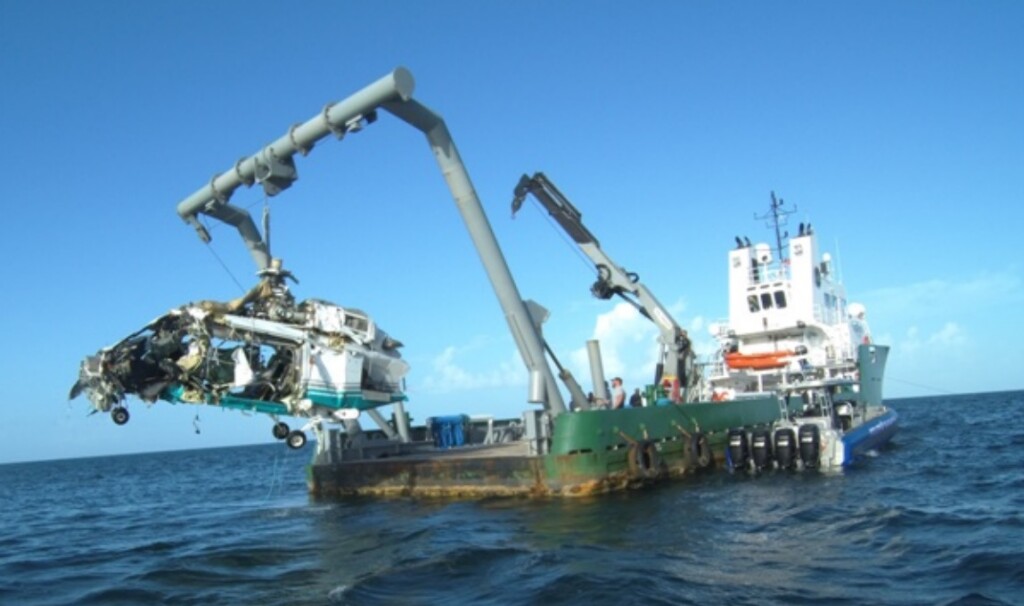
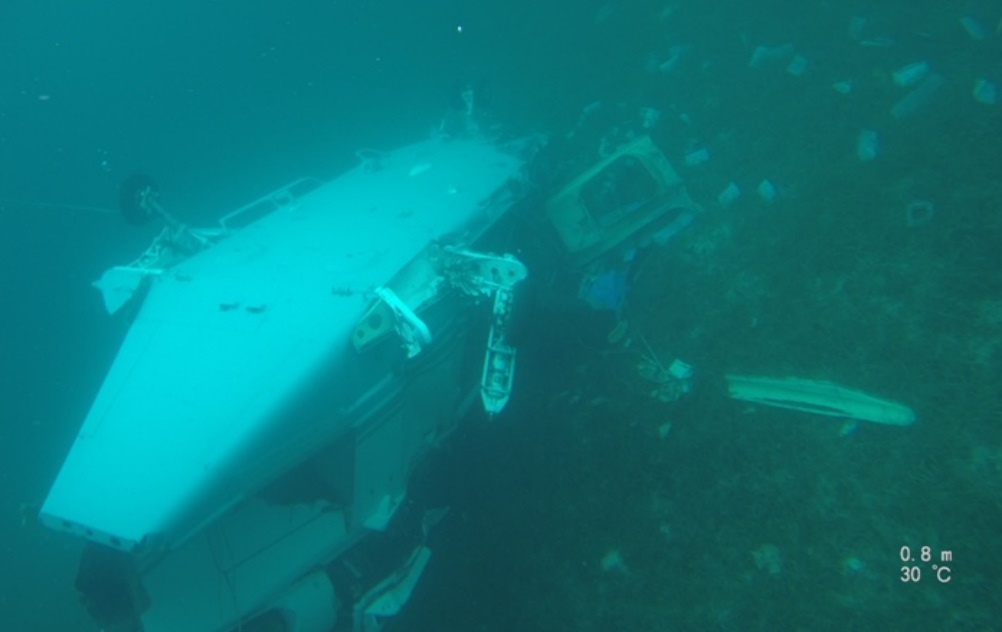
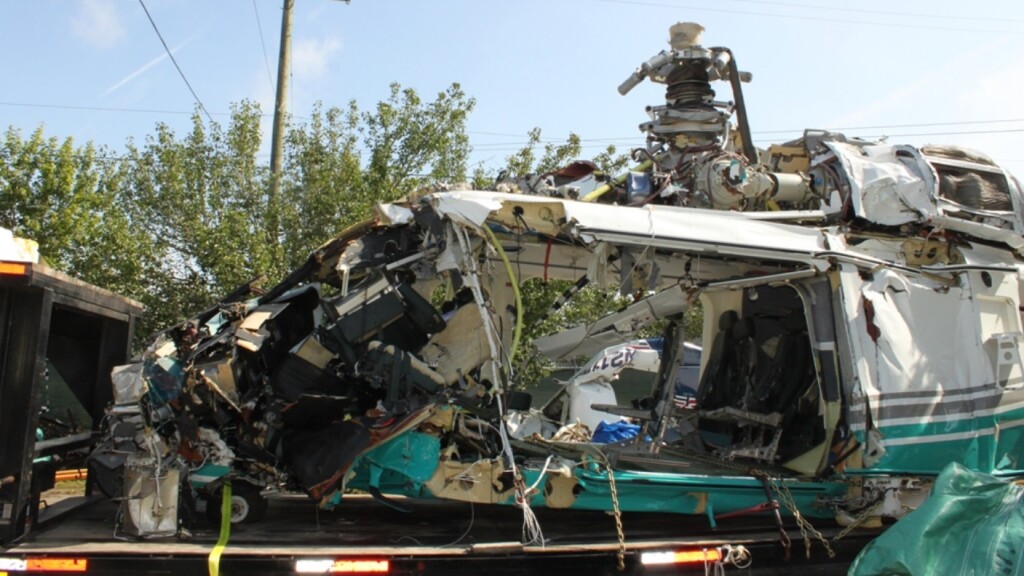


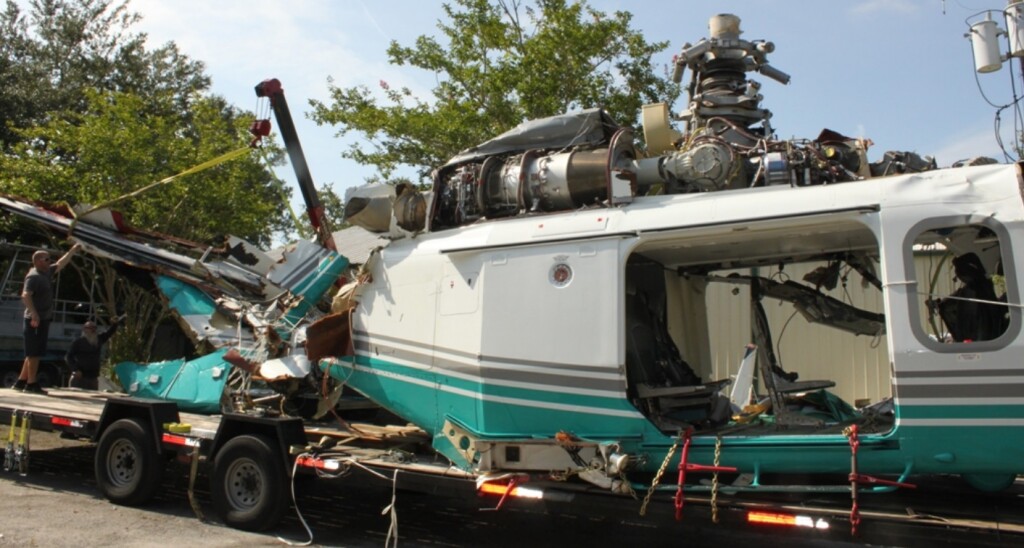
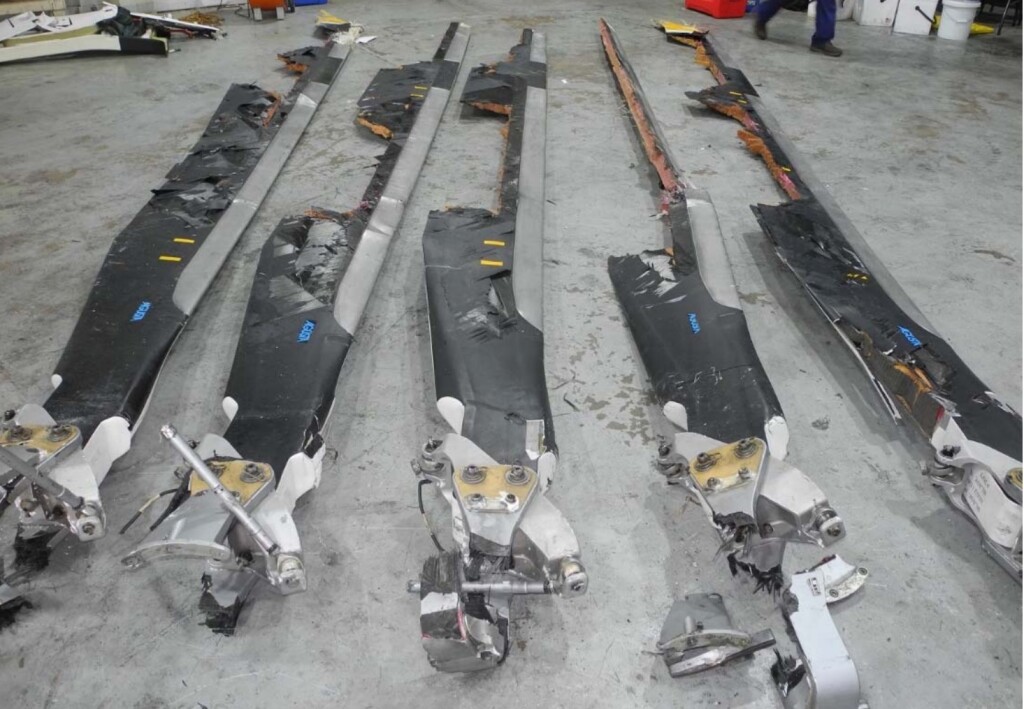
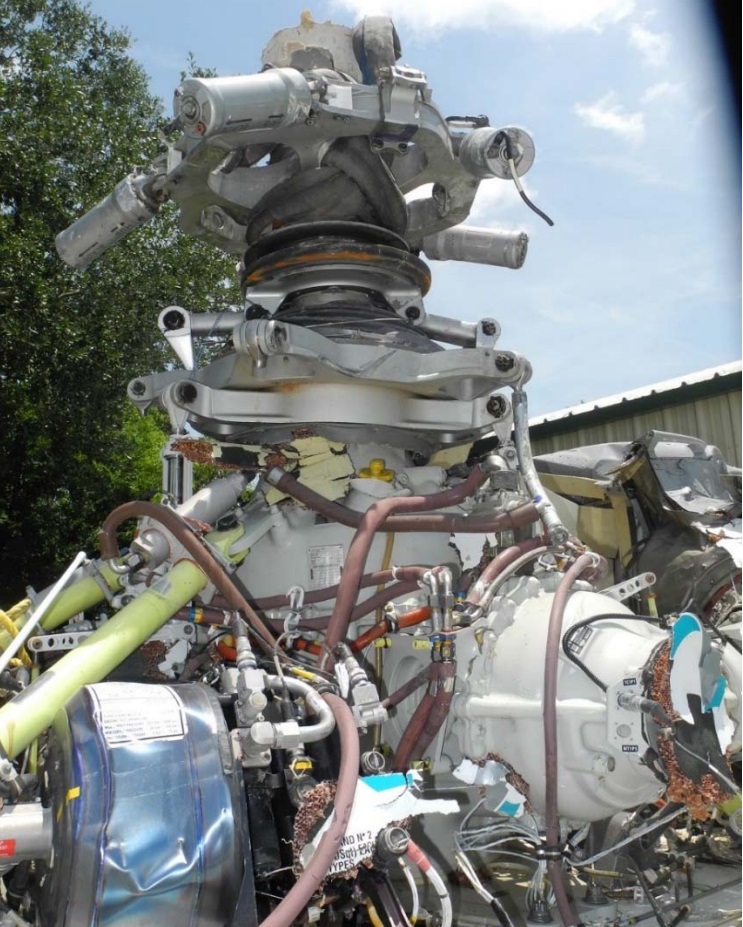
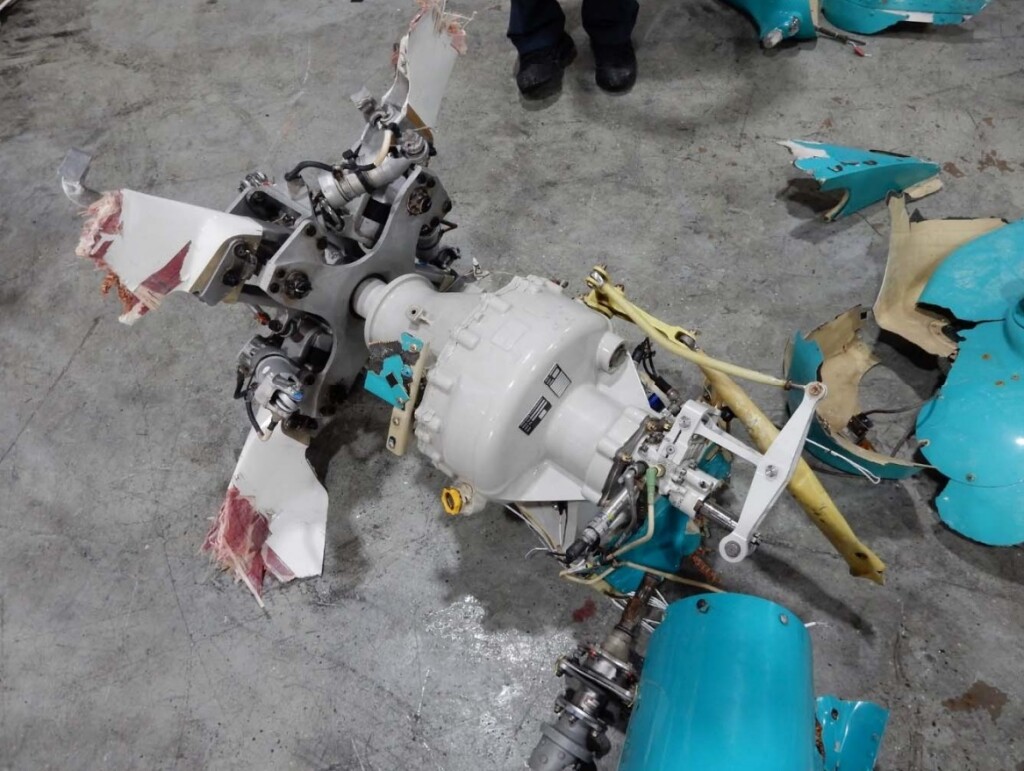

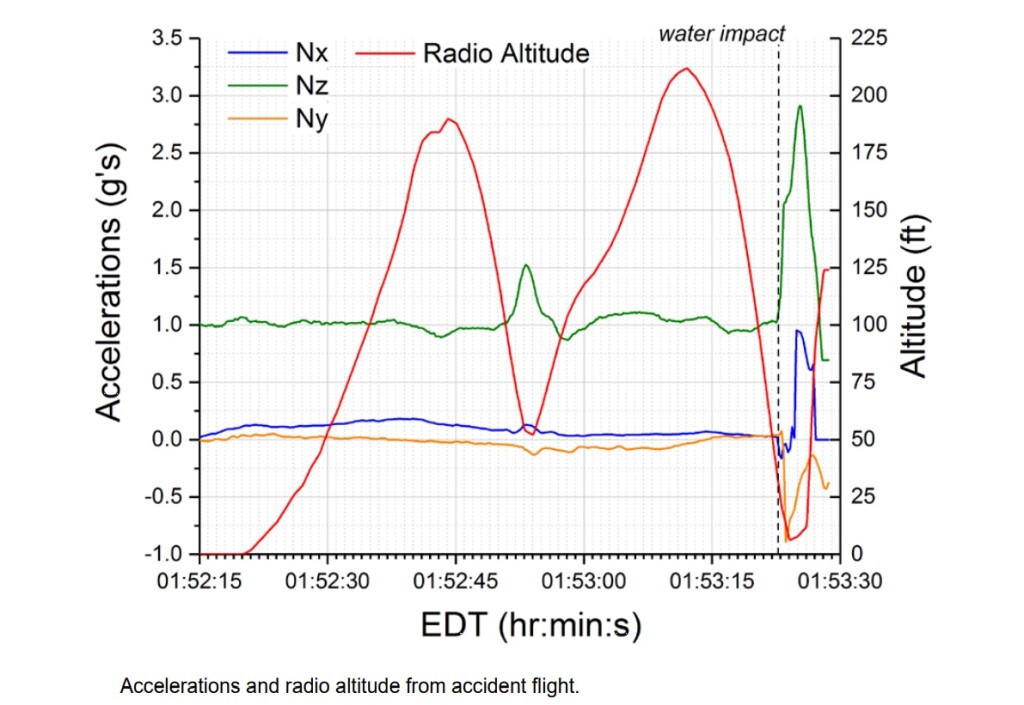

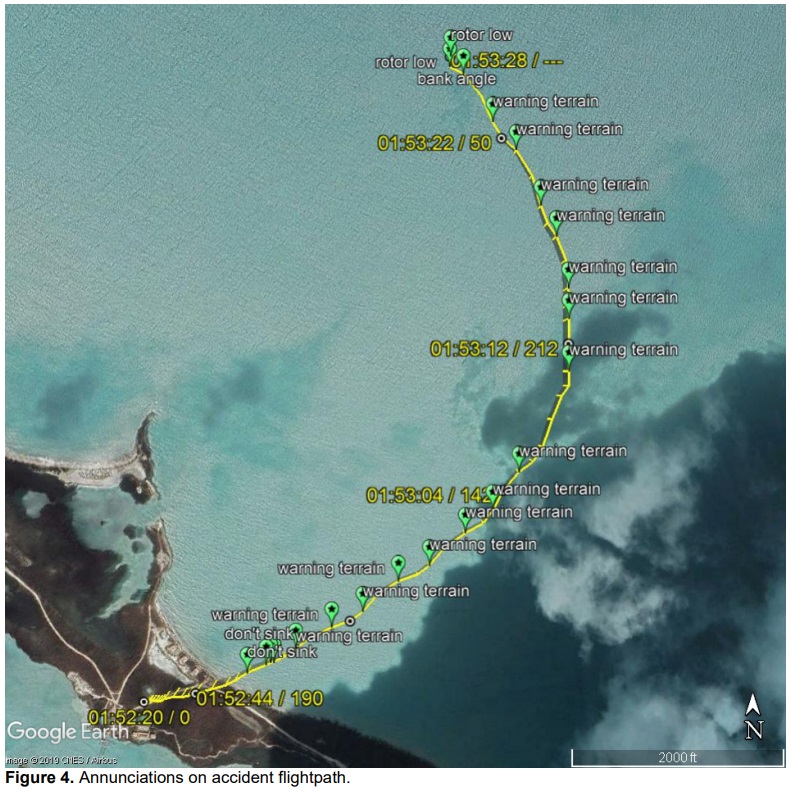



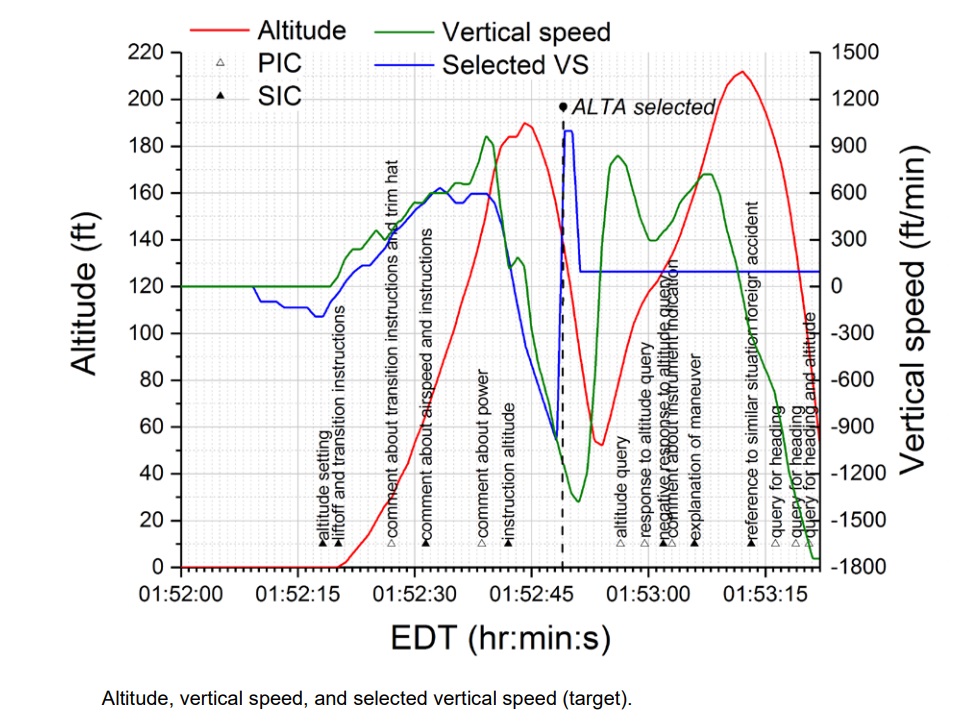


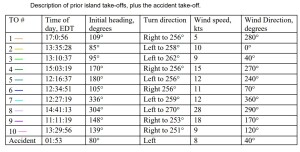
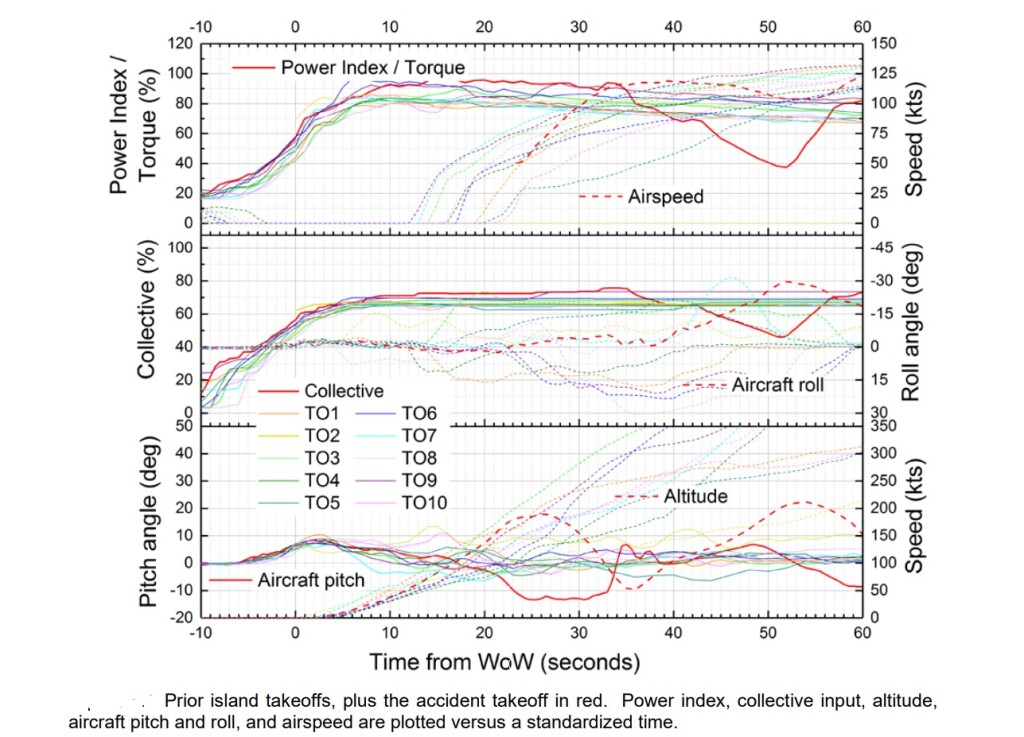
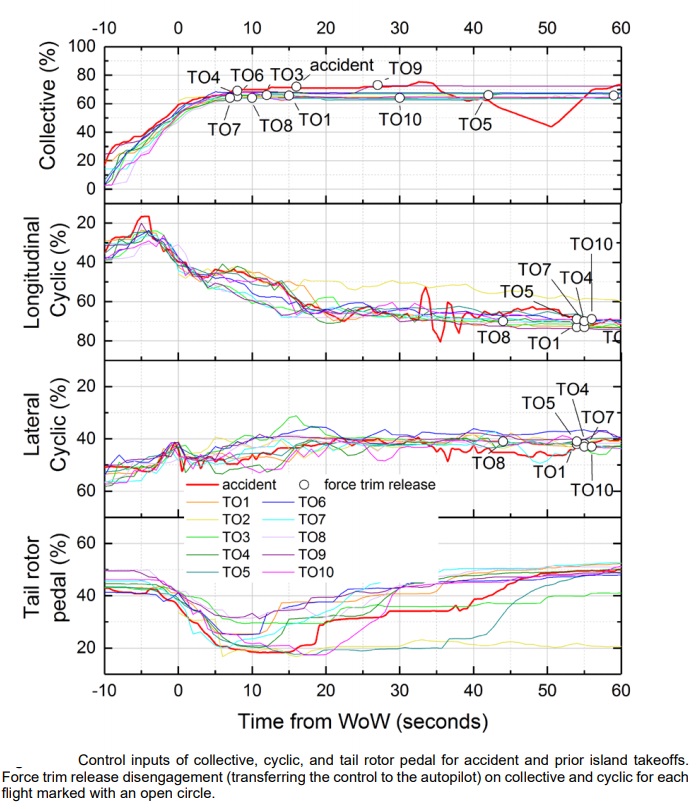


Recent Comments